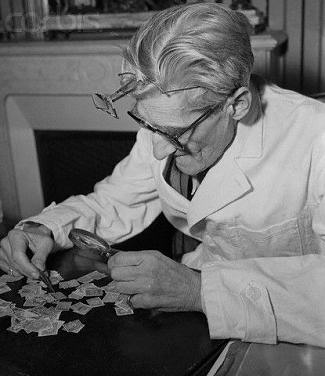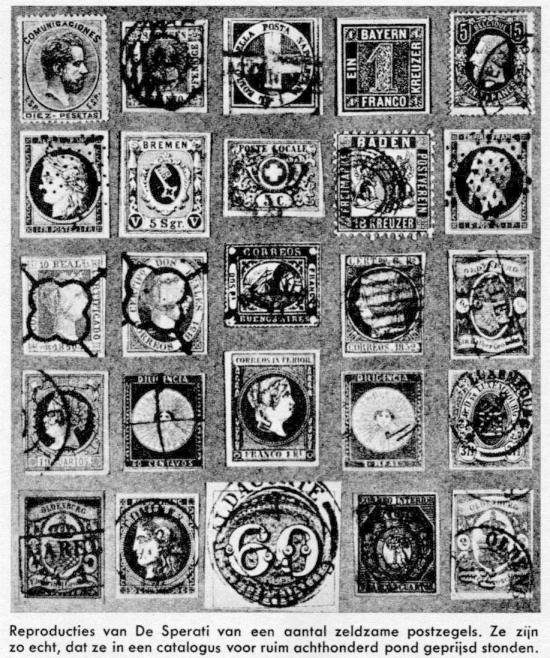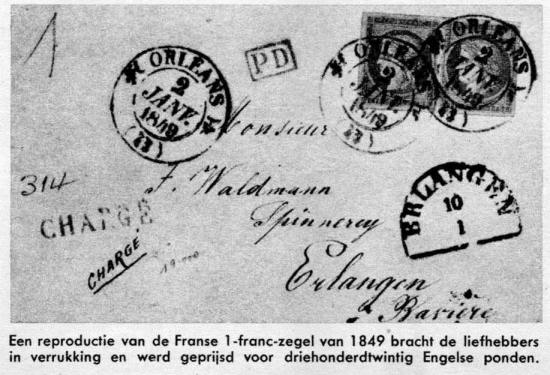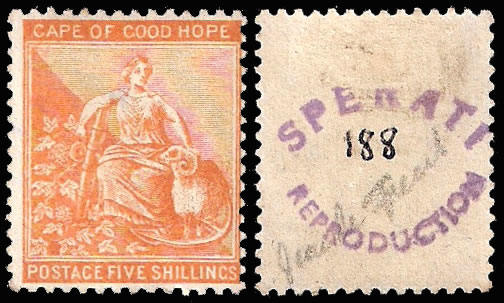|
In Newsletter 29 (September 1994) Hans de Kloet wrote about forged stamps. In that story he also mentioned the name of Jean De Sperati (1884-1957), one of world's best known stamp forgers. The following article, sent in by Henk Janse, tells about his practices.
Jean De Sperati, master forger
 A nephew of the family owned a paper factory and because Jean often stayed there in the holidays, he learned a lot about paper fabrication.
A nephew of the family owned a paper factory and because Jean often stayed there in the holidays, he learned a lot about paper fabrication.
In the end it was his brother, the stamp expert, who led Jean's talent in the direction that would make him world famous in later years. He asked Jean to try to copy a few stamps, just for fun. He gave the boy a handful of stamps from San Marino, and Jean started working.
His first forgeries were rough compared to his later work, but despite this some not very expert customers of his brother bought them. When they discovered that they had been betrayed, they started a lawsuit. The brother was condemned to a penalty, but Jean survived without punishment.
'Just for fun'
Jean De Sperati now had found his task in life! He would forge stamps, that could almost not be distinguished from the originals. This would be his task in life.
Later Jean met a few stamp traders in Paris to whom he elucidated his remarkable ambitions. The stamp traders were curious to see what he could make. He was asked - again just for fun - to produce a few stamps. Short after that the traders sold Jean's products - again just for fun - as originals against high prices. When people got suspicious after some time, the Berlin stamp expert Thier declared that these De Speratis were absolutely authentic!
In 1911 a French stamp trader hired Jean to regularly make
imitations for him. Also a few Swiss traders gave him orders and for some of these people De Sperati has worked up to 1953!
In 1932 Jean sent a packet, that was returned to him from England, to a famous Dutch stamp trader. He knew nothing about the whole affair, trusted De Sperati and sold the stamps in an auction. They brought up more than 3000 guilders. Short after that however the stamps were recognised. The trader protested and De Sperati had to take back his products. Again he used the excuse that he only spoke about 'my material' and never had pretended that the stamps where authentic.

Reproductions of some rare stamps by De Sperati. They look so real,
that they had been priced in a catalogue for more than 800 pounds.
Now it became a lot harder for De Sperati to sell his stamps. Therefore he brought in his sister-in-law, mademoiselle Carne, as intermediate. She offered the stamps in Paris and Marseille, without mentioning that they had been made by her brother-in-law, and giving the impression that they came from a private collection.
Jean's products were very hard to distinguish from authentic stamps. He often used the paper of less valuable stamps to overprint with other, more rare stamps. Thus the watermarks and perforations were most times authentic. Only the imprint was removed in a chemical way and replaced by some other. Because he did not succeed to remove the postmarks, he printed his stamps in such a way that it looked like the printing ink was underneath the postmark. Nobody except he himself did know how he did this, but it is sure that no other forger ever succeeded in printing stamps underneath the postmarks!

A reproduction of a French 1-franc stamp from 1849 delighted enthusiasts,
and was priced for 320,- English pounds.
Each masterpiece was individually printed by hand, after Jean had coated the printing die with ink by his thumb. He worked for months on 1 single stamp, but thereby he made very good prices. Even a De Sperati that was recognised as imitation yielded a substantial price as curiosity.
There is a Swedish stamp, of which only 1 piece is known. Its catalogue price is 8500 guilders, but the stamp is not on sale. Its high value is because it has a deviating colour. Jean, who always needed an original specimen for his imitations because he used photographic techniques, succeeded to counterfeit the Swedish stamp without having seen the original. He laid his hands on a stamp from the same series that had the normal colour, and succeeded to overprint this specimen in exactly the right colour.
Other famous masterpieces of De Sperati are reproduced on this page. And many of his products have still not been recognised as copy.
In France it is not against the law to copy stamps, as long as one does not sell the copies as real specimens. Thus as long as there was no evidence that De Sperati himself sold his stamps as originals, he could go on with his work. He settled in Aix-les-Bains and increased his production continuously. Although he could have earned a lot of money, he did not get rich. He invested the largest part of his profit in materials, tools and raw materials. He was more concerned about the honour than about the profit.
Processes
 When he had become famous over the whole world, he started signing his stamps on the backside. These autographs could easily be erased, but that was not of his concern he reasoned. In the second world war he got so busy, that he could barely handle all requests. On February 18th 1942 he sent a packet with stamps to the Lisbon stamp trader N.J. Ell. The packet was seized by the French post and De Sperati was prosecuted, suspected of currency smuggling. When he had become famous over the whole world, he started signing his stamps on the backside. These autographs could easily be erased, but that was not of his concern he reasoned. In the second world war he got so busy, that he could barely handle all requests. On February 18th 1942 he sent a packet with stamps to the Lisbon stamp trader N.J. Ell. The packet was seized by the French post and De Sperati was prosecuted, suspected of currency smuggling.
Marius Gilbert, a well-known French stamp expert, was heard by the court of justice as expert witness and declared that the stamps were real and represented a value around 70.000 francs. On request of De Sperati also dr. Edmond Locard, another expert, was heard. He declared that the stamps were worth more than 220.000 francs! Then De Sperati showed the dies that he had used for printing the stamps, and therewith proved that they were completely worthless. Despite this he got a penalty of 5000 francs, because he had omitted to declare the content of the packet to the postal authorities.
After a long lasting lawsuit, that started in the war and took until 1952, De Sperati, his wife and his sister-in-law were condemned for fraud. But all were amnestied and De Sperati continued his work. Sometimes his imitations were sold for higher prices than the originals and De Sperati proudly announced that he was no forger but producer of 'artificial philately'.
In 1953 Jean De Sperati decided that it was time to retire. His eye-sight had become bad, and his hands were not as steady anymore as they used to be. Main concern was who could take over his 'business' in artificial philately. He found a young man, who was willing to pay a good price to learn the trade from the old master. But when the news that De Sperati would get a successor reached London, the British Philatelic Association with all speed sent a representative to Aix-les-Bains to negotiate with the old 'artist'. When De Sperati was willing to sell everything, including his secrets, they were willing to pay him a good amount of money. The deal was closed. The whole workshop and the stamp stock of De Sperati moved to London. Experts from the Bank of England conscientiously studied De Sperati's techniques and were puzzled. The methods he used, so they declared, were theoretically impossible, but still delivered fantastic results!
In April 1954 an exposition of De Sperati's work was held in London, that was visited by hundreds of experts from all over the world. About three-quarters of De Sperati's production is nowadays in the hands of the British Philatelic Association and the 12000 members that are connected to this association. The estimation is that he has made between 35.000 and 50.000 copies of 558 different stamps. Imitations that misled the biggest experts, and still confuse the philatelic world.
De Sperati was some kind of genius, but stamp collectors are set at rest by the idea that he now has definitively ended his remarkable task in life.
Top - Back to former page - Home |